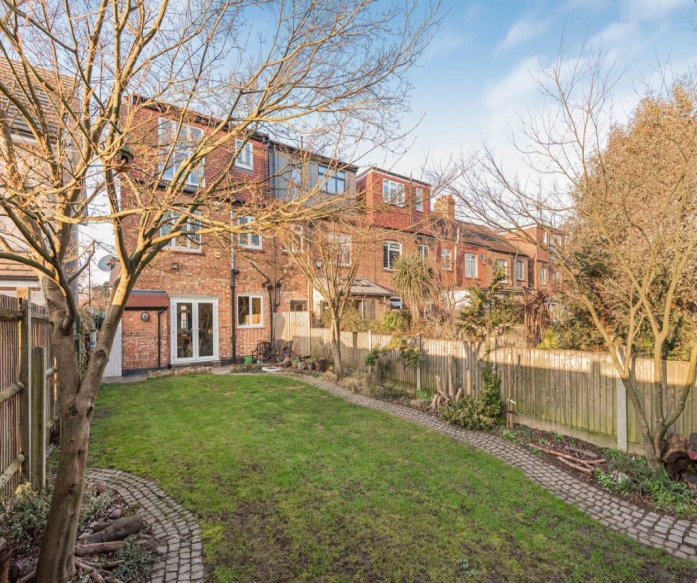Do I Need Planning Permission for a Loft Conversion in Barnet?
June 23, 2025

Thinking about converting your loft? One of the first questions homeowners in Barnet ask is whether they need planning permission. The good news? Most loft conversions don’t require a complete application, but there are a few important rules to know before you start.
1. Permitted Development vs Planning Permission
In England, many loft conversions fall under “permitted development”. That means you can carry out certain changes without a full planning application, so long as your project follows specific guidelines laid out by the government.
Here’s the key information:
-
Volume limits: Terraced homes can add up to 40m³, while detached and semi-detached homes can add up to 50m³ of loft space
-
Roof height and materials: Any new roof area cannot sit higher than your existing ridge, and should match your current materials
-
Dormers and rooflights: Lifetime additions must stay 20cm back from eaves and not exceed the house’s original height
-
Side windows: Must be non-opening or glazed, and at least 1.7m above the floor to avoid overlooking neighbours
-
Conservation or designated areas: Planning permission is usually required for any dormer or roof extension in conservation areas, national parks, or listed properties
2. What Counts Toward Your Volume Allowance?
It’s worth remembering that permitted development rules include any previous loft work under the same roof. So, if there’s already an extension or dormer, its volume is counted toward your 40m³/50m³ limit.
That means anything beyond those limits — or retaining an existing dormer — will usually need full planning permission.
3. Conservation Areas & Article 4 Directions
Many parts of Barnet fall within conservation areas, which often come with extra restrictions. Local authorities can introduce Article 4 directions, meaning even permitted development may require approval.
In these cases, you should always check with Barnet Council before starting work — a straightforward call can save a lot of hassle later.
4. When Will You Need Planning Permission?
Planning permission is typically required if you are:
-
Building larger dormers that break the permitted development limits
-
Creating mansard roofs or reworking the roof structure significantly
-
Installing a balcony or veranda (not covered by permitted development)
-
Working on a conservation area or listed building
If any of these apply — or if your conversion crosses the volume threshold — you'll need to submit a full planning application.
5. Certificates of Lawful Development
If your project meets the permitted development requirements, another option is to apply for a Certificate of Lawful Development (CLD). It’s not a planning application, but a legal document confirming that your loft conversion complies with regulations. If your neighbour raises objections later, you’ll already have official proof that the work was lawful.
6. Building Regulations Still Apply
It’s important to remember that regulated building standards still apply, even if planning permission isn’t required. That means things like structural safety, insulation, fire safety, stairs, and ventilation must all meet building regulations and be approved by Building Control — whether via Barnet Council or an approved inspector.
7. How to Know What You Need
Here’s a simple step-by-step guide for Barnet residents:
|
Step |
What to Check |
|---|---|
|
1 |
Are you in a conservation area or is your property listed? (Barnet Council website) |
|
2 |
Will you exceed 40m³ (terraced) or 50m³ (semi/detached) roof space? |
|
3 |
Will you add dormers set back less than 20cm or higher than the ridge? |
|
4 |
Are side windows involved? Are they at least 1.7m high and obscured? |
|
5 |
Will you add a balcony, veranda, or work on a designated property? |
|
6 |
If any of the answers are Yes, you likely need full planning permission. |
8. How We Can Help
At Loft Conversion Barnet, we help you every step of the way — from design and permitted development checks to full planning applications and building regulations. Our in-house team and local architects are well-versed in Barnet's planning rules and can guide you through the process quickly and efficiently.
We’ll tell you straight away what kind of approval you need, saving time, money, and avoiding stress later on.
Summary
Most loft conversions in Barnet are doable under permitted development, as long as you stay within volume limits, roof height, and window placement rules — and aren’t in a protected area. But if your project goes beyond those boundaries, or you're in a conservation zone, you'll likely need full planning permission — or even a Certificate of Lawful Development.
Want to know exactly where your project stands? Get in touch with Loft Conversion Barnet, and we’ll walk you through your options on a no-obligation basis.